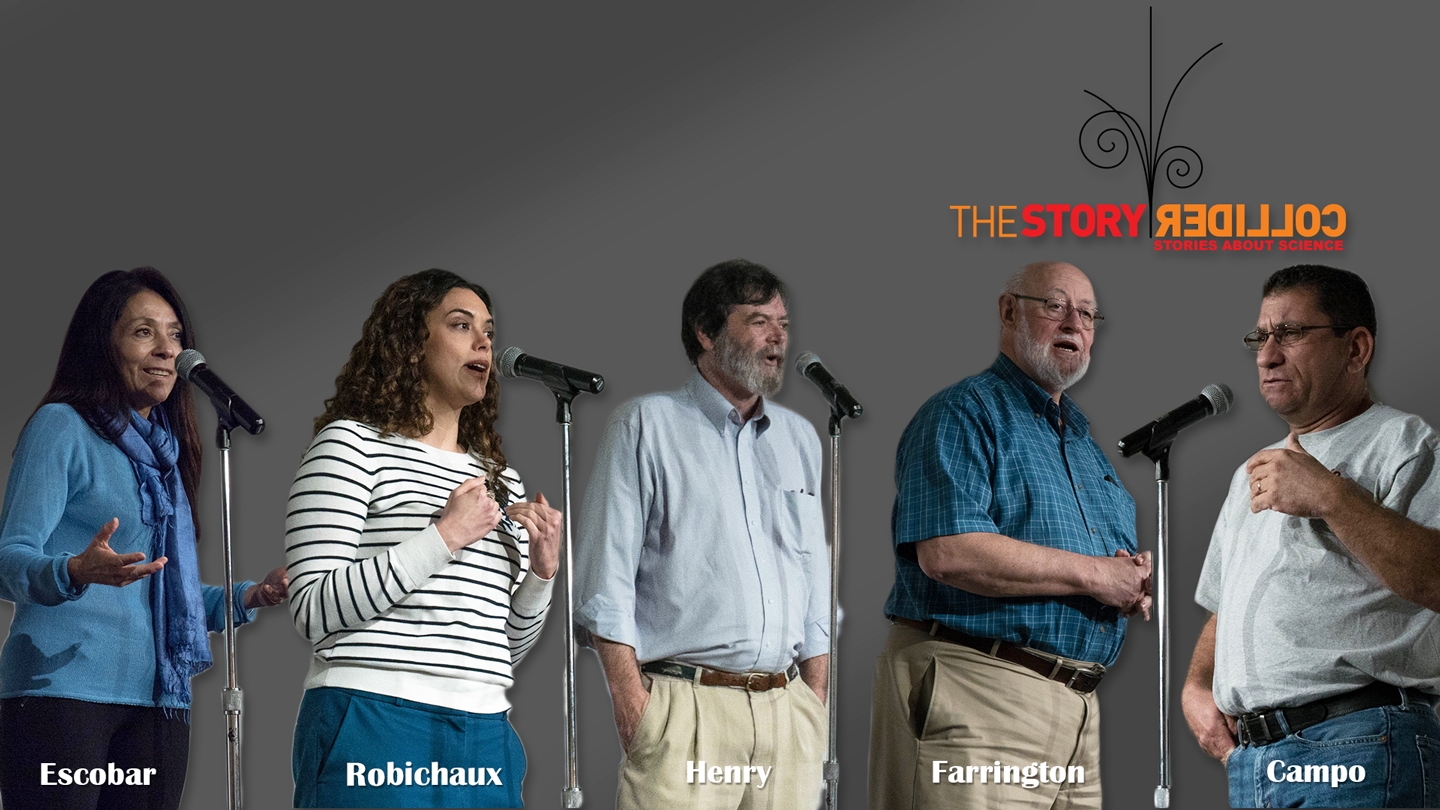
Story Collider shows full impacts of Oil Spills
While studying the mechanisms and impacts of oil spills on Gulf ecosystems, we sometimes lose our perspective of the impacts marine oil blowouts have on people; especially the families of the 11 men killed during the Deepwater Horizon rig explosion. The Story Collider kicked off the 2017 GoMOSES Conference with five stories from people who have a story about science and the Gulf to share..
Dealing with the Spill
 Charlie Henry, a Louisiana native, is the Director of NOAA’s Gulf of Mexico Disaster Response Center in Mobile, AL. In addition oil spills, Henry works as a liaison of science into the disaster response to minimize the damage done by natural or man-made disaster.
Charlie Henry, a Louisiana native, is the Director of NOAA’s Gulf of Mexico Disaster Response Center in Mobile, AL. In addition oil spills, Henry works as a liaison of science into the disaster response to minimize the damage done by natural or man-made disaster.
His efforts with Deepwater Horizon began like any other oil spill with a phone call late at night from the Coast Guard, but as the spill progressed he and his colleagues had a feeling that this one was going to be big. Henry breaks down his job into five questions spill responders ask during a spill: (1) what was spilled (chemical, oil), (2) where is it going to go, (3) what is going to get hit and impacted, (4) how is it going to hurt (toxic or physical response), and (5) what can we do to make it better?
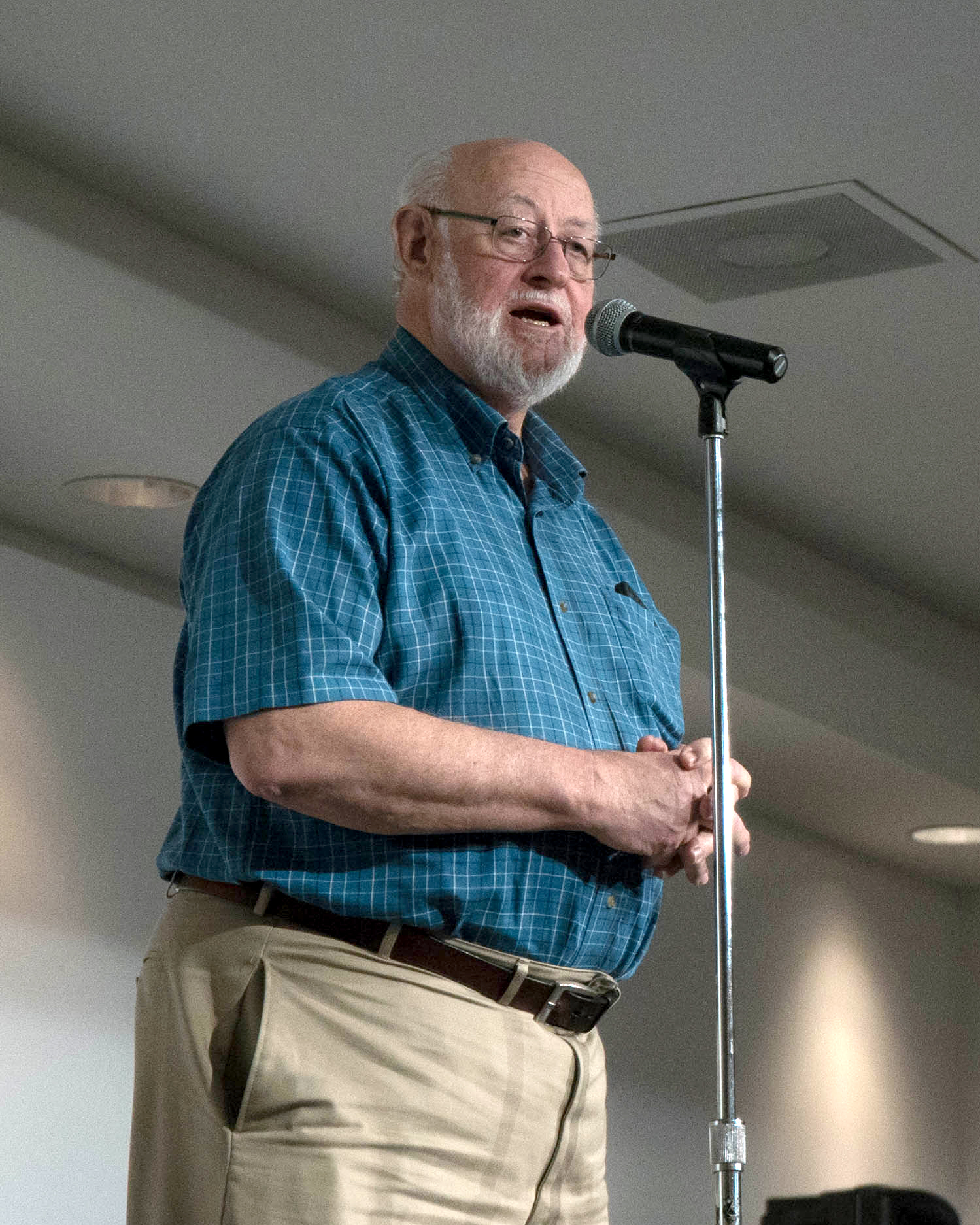 John Farrington, a chemical oceanographer, first heard of DwH from news headlines at home. After letting the tragedy of April 20th settle, he thought “Not again.” Farrington experienced another mega Gulf spill in the late-1970s. While the Ixtoc I blowout in 1979 spread oil across the southern and western Gulf for 9 months, Farrington and colleagues collected samples from around the Campeche Bay to understand the chemical properties of the oil and what impacts it might have on different ecosystems.
John Farrington, a chemical oceanographer, first heard of DwH from news headlines at home. After letting the tragedy of April 20th settle, he thought “Not again.” Farrington experienced another mega Gulf spill in the late-1970s. While the Ixtoc I blowout in 1979 spread oil across the southern and western Gulf for 9 months, Farrington and colleagues collected samples from around the Campeche Bay to understand the chemical properties of the oil and what impacts it might have on different ecosystems.
This scientific response of Farrington’s group provided vital context to the evolution of Ixtoc I, and even today helps C-IMAGE researchers study the impacts 35+ years later.
A Memorable Moment
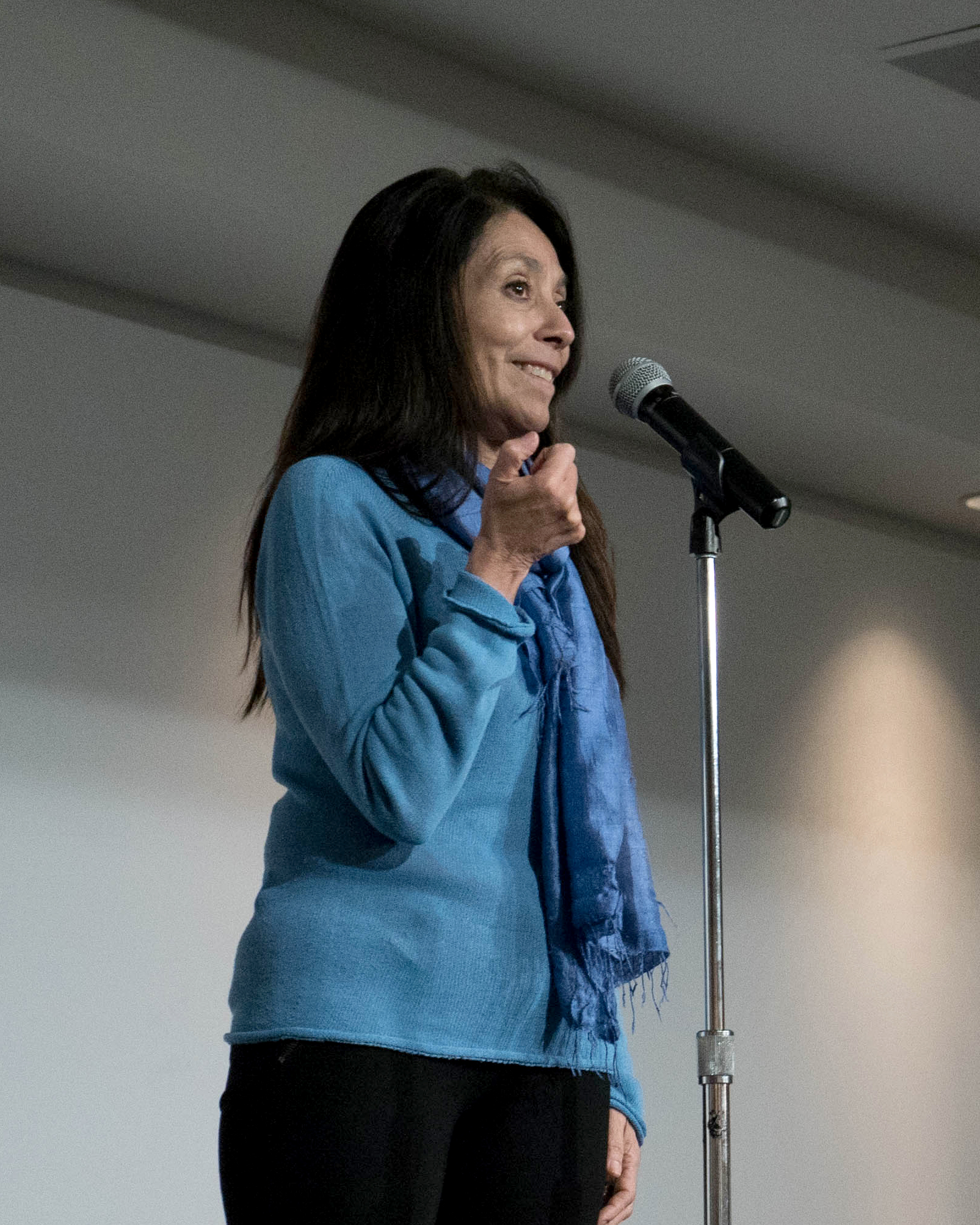 Elva Escobar is the director of the Instituto de Ciencias del Mar y Limnología at the Universidad Nacional Autónoma de México (UNAM). She studies organisms at the seafloor to understand nutrients traveling through the environement. Her story involved her first trip in a deep-sea submersible and the unexpected events waiting for her in the deep sea.
Elva Escobar is the director of the Instituto de Ciencias del Mar y Limnología at the Universidad Nacional Autónoma de México (UNAM). She studies organisms at the seafloor to understand nutrients traveling through the environement. Her story involved her first trip in a deep-sea submersible and the unexpected events waiting for her in the deep sea.
In the days preparing for the 8-hour dive to the sea-floor, reviewing science plans, planning meals and bathroom breaks, a nervousness was lingering for Escobar. Once inside the submersible with two French pilots, the calm of the ocean came over the crew on their way down to 2,500m. Rested on the sea floor, Escobar was ready to get to work, but the French had priorities. Lunch. From the sub’s compartments comes salad, soups, cheeses, chocolates and a main course filet, all complete with a bottle of French wine. Research resumed after the meal and once back on the ships deck, Elva is greeted with an ice bath, to celebrate her first submersible dive.
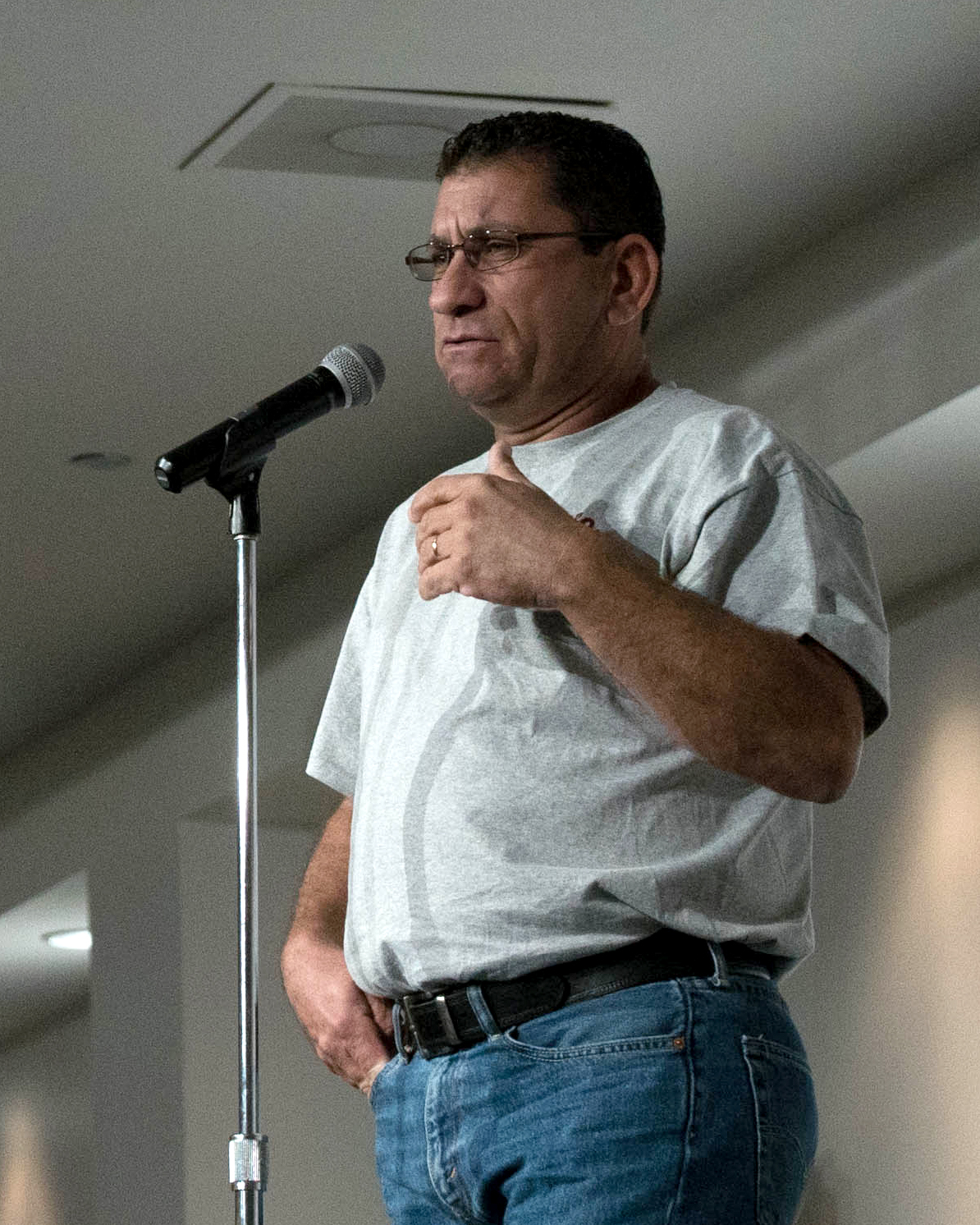 Robert Campo is a 4th generation Louisiana fisherman. For 117 years, the Campo family has known nothing but fishing. Campo was patrolling his oyster beds on April 20th, while the afternoon was like any other one before, 50 bags of oysters to call it a day. When back at the dock, he gets a call from a New York area code.
Robert Campo is a 4th generation Louisiana fisherman. For 117 years, the Campo family has known nothing but fishing. Campo was patrolling his oyster beds on April 20th, while the afternoon was like any other one before, 50 bags of oysters to call it a day. When back at the dock, he gets a call from a New York area code.
On the other line is Anne Thompson (NBC Nightly News), asking about the impacts of the spill on the family business, the rig exploding. “Woah, slow down!” Campo says. The Deepwater Horizon news broke to him over the phone and he immediately began thinking how the winds would impact his oyster beds. In the following weeks, fish kills washed ashore for miles along the Gulf coast. Campo’s beds still have not recovered from the spill, he’s moved into shrimping since and continues to fish in Gulf waters because it is his home, and he knows nothing else.
Path towards Recovery
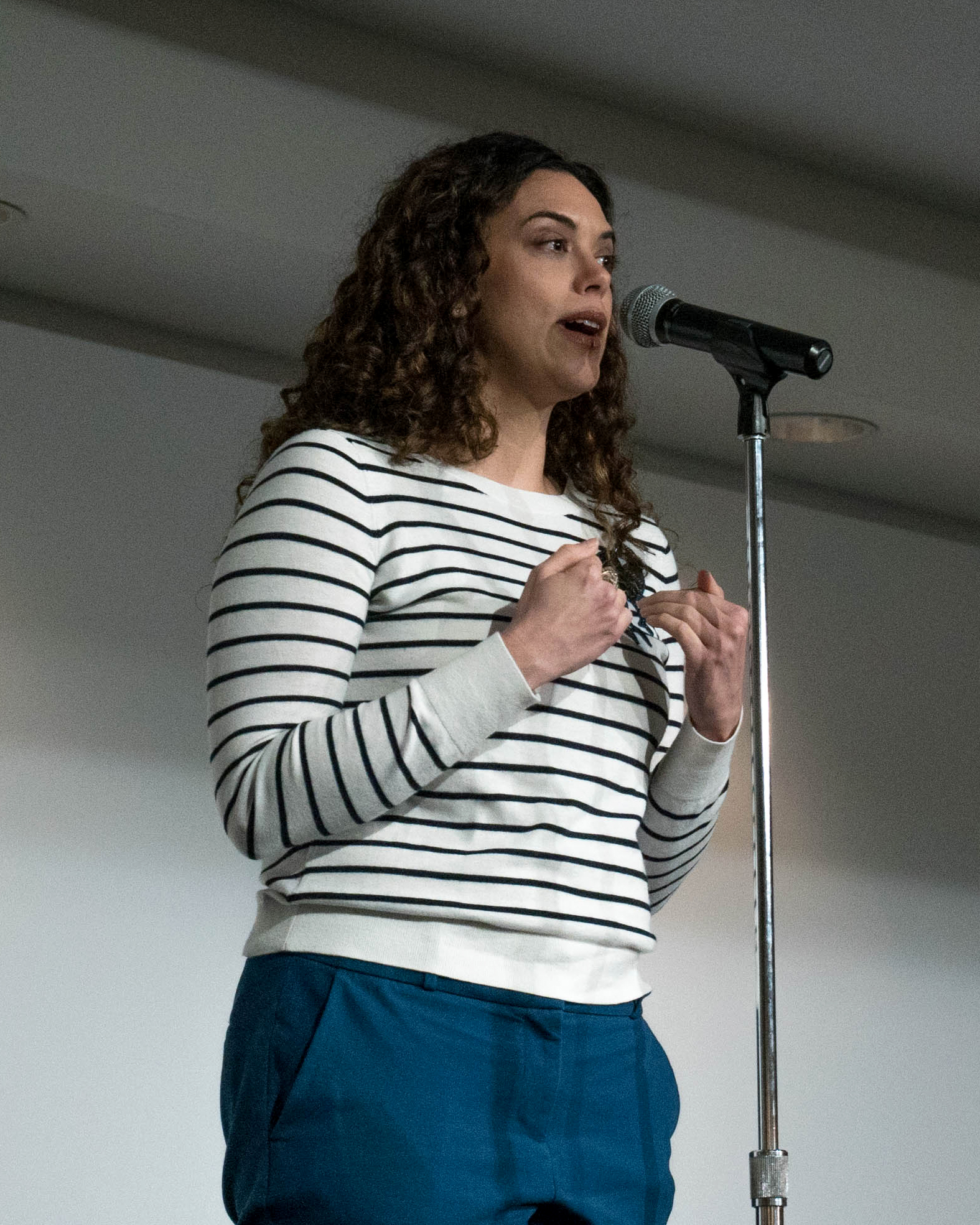 Estelle Robichaux is a Restoration Project Analyst at the Environmental Defense Fund. Her memory of hearing about the spill came when she was finishing a semester in graduate school, and preparing to travel to Europe. Her busy travel schedule didn’t allow for her to catch up on the daily events in April and May, 2010, but her curiosity and concern for the Gulf’s health caught up to her. With a loved one ill, and oil in the Gulf, Robichaux saw the people and places she loved change from what she knew.
Estelle Robichaux is a Restoration Project Analyst at the Environmental Defense Fund. Her memory of hearing about the spill came when she was finishing a semester in graduate school, and preparing to travel to Europe. Her busy travel schedule didn’t allow for her to catch up on the daily events in April and May, 2010, but her curiosity and concern for the Gulf’s health caught up to her. With a loved one ill, and oil in the Gulf, Robichaux saw the people and places she loved change from what she knew.
While working at the Environmental Defense Fund years later, the BP settlement money came through to pay for large-scale restorations to the marshes. The empowerment Robichaux felt after the settlement give her hope for the recovery of the Gulf.
The Gulf of Mexico Research Initiative has provided a path towards recovery from oil spill. Not just Deepwater Horizon, future spills too. The research produced by GoMRI centers provides recover and restoration agencies a better tools and resources to better understand Gulf dynamics and impacts.
Recordings of these stories will be adapted to a podcast series on the Story Collider webpage. To listen to last years stories from the Tampa event in February, visit the C-IMAGE Youtube Channel.


